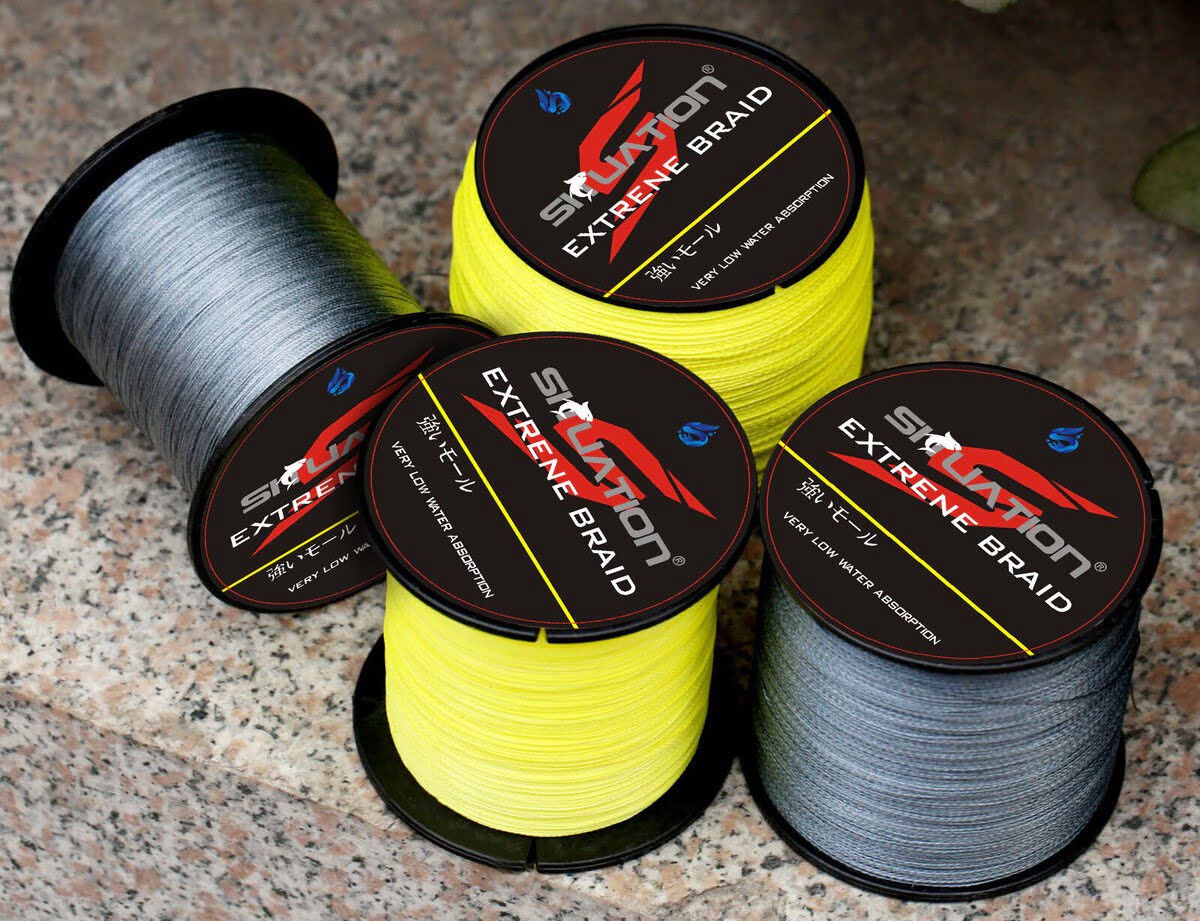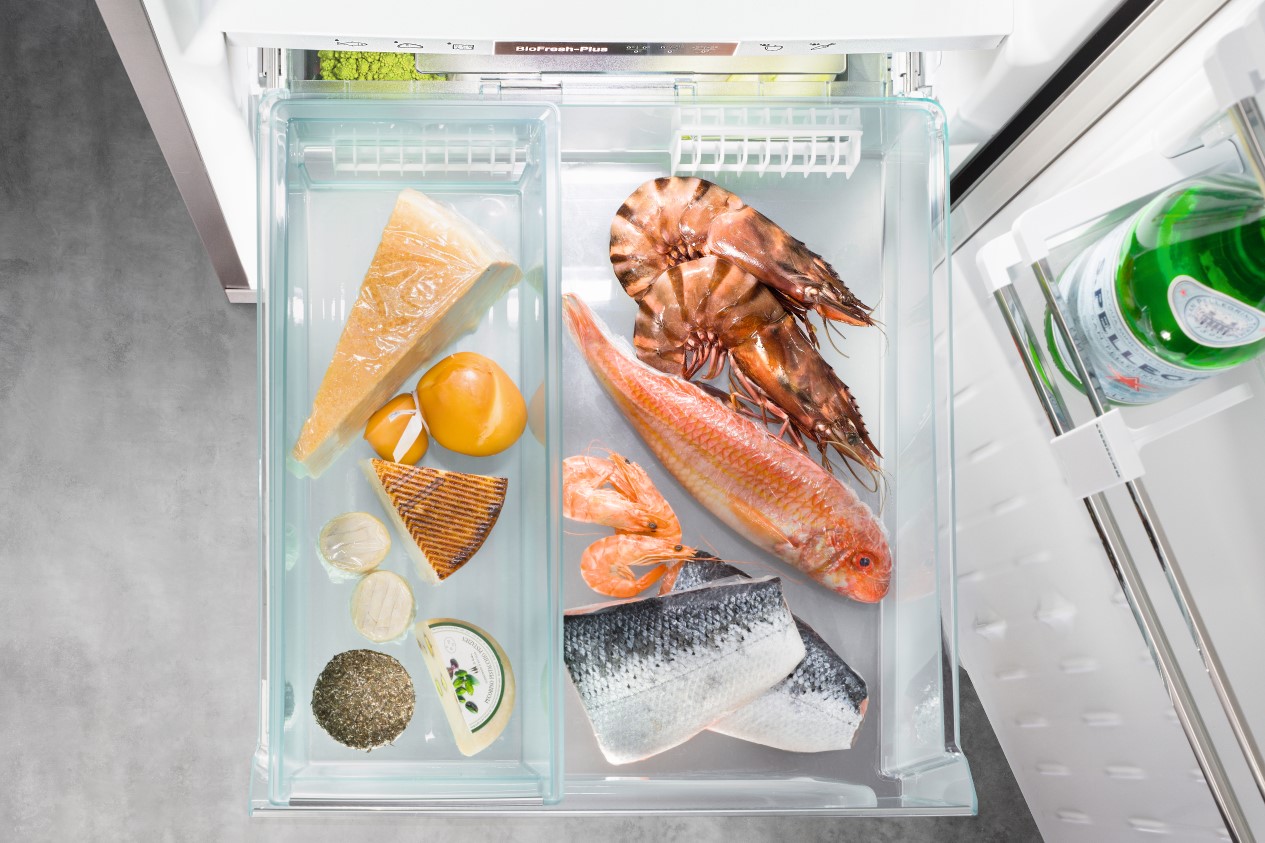

Articles
How To Store Fishing Line
Modified: March 1, 2024
Learn the best techniques for storing fishing line and keeping it in optimal condition with our informative articles on fishing line storage.
(Many of the links in this article redirect to a specific reviewed product. Your purchase of these products through affiliate links helps to generate commission for Storables.com, at no extra cost. Learn more)
Introduction
When it comes to fishing, having a well-maintained fishing line is essential for a successful angling experience. Properly storing your fishing line can help prolong its lifespan and prevent it from becoming damaged or tangled, ensuring that you are always ready for your next fishing adventure.
Choosing the right storage method for your fishing line depends on the type of line, the amount of line, and personal preference. Whether you use monofilament, fluorocarbon, or braided line, there are various storage options available to keep your fishing line in optimal condition.
In this article, we will explore different methods for storing fishing line and provide you with valuable tips to ensure the longevity of your fishing line. By implementing these storage techniques, you can keep your fishing line organized, untangled, and ready for action whenever you hit the water.
Key Takeaways:
- Properly storing fishing line is crucial for maintaining its quality and performance. Consider the type of line, amount, accessibility, and available space when choosing a storage method. Clean, inspect, and prepare the line before storage to ensure longevity.
- Storing fishing line in a dry, cool, and dark place is essential to protect it from UV damage, extreme temperatures, and moisture. Regularly inspect, replace, and rotate the line to maintain its integrity and strength for a more enjoyable fishing experience.
Read more: How To Store Fish While Fishing
Choosing the Right Storage Method
When it comes to storing your fishing line, there are a few key factors to consider in order to choose the right method:
- Type of Fishing Line: Different types of fishing line, such as monofilament, fluorocarbon, and braided line, have different storage requirements. For example, monofilament line is more prone to UV damage, so it should be stored in a way that protects it from sunlight.
- Amount of Line: The amount of fishing line you have will also influence your choice of storage method. If you have larger spools of line, you may need a storage option that can accommodate them, whereas if you only have smaller amounts, compact storage options may be more suitable.
- Accessibility: Consider how easily you want to access your fishing line. If you frequently change lines or need quick access to different line types, storage options that allow for easy removal and replacement of line may be preferred.
- Space Available: The amount of storage space you have will also play a role in determining the best method for storing your fishing line. If you have limited space, compact and stackable storage solutions may be ideal.
Ultimately, the right storage method for your fishing line will depend on a combination of these factors. It’s important to choose a method that best suits your specific needs and fishing style.
Preparing the Fishing Line for Storage
Before storing your fishing line, it is important to properly prepare it to ensure its longevity and prevent any issues when you retrieve it for your next fishing trip. Here are a few steps to follow when preparing your fishing line for storage:
- Clean the Line: Start by cleaning your fishing line to remove any dirt, debris, or saltwater residue. Use a mild soap or fishing line cleaner and a soft cloth or sponge to gently wipe down the line. This will help prevent any corrosive substances from damaging the line during storage.
- Inspect for Damage: Examine the line for any signs of damage, such as fraying or weak spots. If you notice any issues, it is best to replace the line before storing it. This will prevent any unexpected breakages or failures when you are out on the water.
- Dry the Line: Ensure that the fishing line is completely dry before storing it. Moisture can lead to mold or mildew growth, which can weaken the line and affect its performance. You can use a clean, dry cloth to gently pat the line dry or hang it in a well-ventilated area until it is fully dry.
- Remove the Hooks and Lures: Before storing your fishing line, it is recommended to remove any hooks, lures, or other tackle attached to it. This will prevent them from tangling or causing damage to the line during storage. Additionally, removing hooks and lures will make it easier to handle and store the line.
By following these steps, you can ensure that your fishing line is in optimal condition and ready for storage. Taking the time to properly prepare your line will help maintain its quality and performance for future use.
Storing Fishing Line on Spools
Storing fishing line on spools is one of the most common and convenient methods. It allows for easy access and helps to keep the line organized. Here are some tips for storing fishing line on spools:
- Select the Right Spool: Choose spools specifically designed for fishing line storage. These spools are often made of durable materials, such as plastic or metal, and have built-in features to keep the line secure and prevent tangling.
- Wind the Line Neatly: When transferring the fishing line onto the spool, it is important to wind it neatly and evenly. Start by threading the end of the line through the center of the spool and then slowly rotate the spool while applying gentle tension to the line. This will help ensure that the line is evenly distributed on the spool and reduces the risk of tangles.
- Secure the Line: Once the line is wound onto the spool, use a small piece of tape or a rubber band to secure the loose end of the line. This will prevent the line from unraveling and tangling while in storage.
- Label the Spool: To easily identify and differentiate between different types of fishing line, consider labeling each spool. Use a marker or adhesive label to write down the line type, pound test, and any other relevant information. This will save you time and confusion when selecting the appropriate line for your fishing needs.
- Store in a Dry Place: It is important to store spools of fishing line in a dry and cool place away from direct sunlight. Exposure to moisture and heat can degrade the line and reduce its strength. Consider storing the spools in a tackle box, drawer, or storage container to protect them from environmental elements.
Storing fishing line on spools is a popular choice due to its convenience and ease of access. By following these tips, you can keep your fishing line neatly organized and ready for your next fishing adventure.
Storing Fishing Line on Line Holders or Spindle Boxes
Another effective method for storing fishing line is by using line holders or spindle boxes. These storage options are specifically designed to keep fishing line tangle-free and easily accessible. Here are some tips for storing fishing line on line holders or spindle boxes:
- Select the Right Line Holder: There are various types of line holders available, including plastic or wooden spindles, foam line holders, or specialized line storage boxes. Choose a line holder that suits your needs and can accommodate the length and thickness of your fishing line.
- Secure the Line: Begin by attaching one end of the fishing line to the line holder or spindle. You can use a small piece of tape or a rubber band to secure the line and prevent it from unraveling. This will keep the line organized and prevent tangling.
- Wrap the Line Neatly: Begin wrapping the fishing line around the line holder or spindle in a neat and organized manner. Keep the tension consistent while wrapping to avoid loose sections of line. Ensure that the line is evenly distributed and doesn’t overlap or twist as you wrap it around the holder.
- Label the Line Holder: To easily identify the type and pound test of the fishing line, consider labeling the line holder or spindle box. You can use a marker or adhesive label to indicate important information, such as the line type and any specific details about its use or properties.
- Store in a Dry and Dark Place: Just like with other storage methods, it is crucial to store line holders or spindle boxes in a dry, cool, and dark place. Exposure to sunlight and moisture can degrade the fishing line and reduce its effectiveness. Optimal storage locations include tackle boxes, drawers, or shelves in a well-ventilated area.
Storing fishing line on line holders or spindle boxes provides a compact and organized solution for keeping your fishing line in great condition. By following these tips, you can ensure easy access to your fishing line and minimize the risk of tangling or damage.
When storing fishing line, make sure to keep it away from direct sunlight and extreme temperatures to prevent it from deteriorating. Store it in a cool, dry place to maintain its strength and durability.
Read more: How To Store Smoked Fish
Storing Fishing Line on Reels
Storing fishing line on reels is a common method used by anglers. Whether you have spinning reels, baitcasting reels, or fly reels, here are some tips for storing fishing line on reels:
- Clean and Dry the Reel: Before storing the fishing line on a reel, ensure that the reel is clean and dry. Use a soft cloth to wipe off any dirt or debris from the reel’s surface. Additionally, make sure the reel’s interior is dry to prevent any moisture-related damage to the line.
- Remove Excess Line: If the reel already has line on it, check if it needs to be replaced. Over time, the line can become worn or damaged, affecting its performance. If necessary, remove the old line and replace it with new line that matches the reel’s specifications.
- Spool the Line: Start spooling the fishing line onto the reel by attaching one end of the line to the reel’s spool using an arbor knot or a suitable connection method. Apply gentle tension to the line as you turn the reel’s handle to spool it evenly onto the reel.
- Leave Adequate Line Capacity: When spooling the line onto the reel, make sure to leave enough space at the spool’s edge. This will prevent the line from overfilling the reel, which can cause casting issues and potential tangles. Leave about 1/8 inch of space between the line and the spool’s edge.
- Secure the Line: Once the line is spooled onto the reel, secure it in place. You can tie an overhand knot or use a small piece of electrical tape to prevent the line from unraveling during storage.
- Store in a Reel Case or Sleeve: To provide additional protection for the reel and the line, consider storing the reel in a reel case or sleeve. These protective covers shield the reel from dust, moisture, and other environmental factors that can potentially damage the line.
Storing fishing line on reels is a convenient and practical solution for anglers. By following these tips, you can ensure that your fishing line remains in good condition and ready for your next fishing expedition.
Storing Fishing Line on Line Winding Boards
Line winding boards, also known as line spooling stations, are versatile tools that provide a convenient method for storing and organizing fishing line. Here are some tips for storing fishing line on line winding boards:
- Select the Right Line Winding Board: There are various types of line winding boards available, including handheld spooling stations or larger, freestanding boards. Choose a board that suits your needs and the amount of fishing line you intend to store.
- Secure the Line Winding Board: Secure the line winding board to a stable surface such as a table or workbench. This will prevent it from moving or shifting during the line spooling process.
- Prepare the Line: Start by attaching the end of the fishing line to the line winding board. Many line winding boards have a secure attachment point or peg where you can fasten the line. Make sure the line is securely fastened to the board and won’t come loose during the winding process.
- Wind the Line: Begin winding the line onto the line winding board by turning the handle or crank, which rotates the spool. Apply gentle tension to the line as you wind it onto the spool, ensuring it is evenly distributed across the board.
- Label the Line Winding Board: To easily identify the type and pound test of the fishing line, consider labeling the line winding board. You can use a marker or adhesive label to indicate important information about the line, making it easier to select the appropriate line for your fishing needs.
- Store in a Dry Place: After winding the line onto the line winding board, store it in a dry and cool place. Avoid exposing the board to direct sunlight or high humidity, as these conditions can degrade the fishing line over time.
Storing fishing line on line winding boards provides a convenient and organized solution. By following these tips, you can keep your fishing line neatly wound and easily accessible for your next fishing adventure.
Other Tips for Proper Fishing Line Storage
In addition to the specific storage methods discussed earlier, here are some additional tips to ensure proper storage and maintenance of your fishing line:
- Store Line in a Dark Place: Exposure to sunlight can degrade fishing line over time. To protect the line from UV damage, store it in a dark place such as a tackle box or a drawer away from direct sunlight.
- Avoid Extreme Temperatures: Extreme temperatures can also have a negative impact on the performance and longevity of fishing line. Avoid storing the line in areas that experience high heat or extreme cold, as this can weaken the line and affect its strength.
- Keep Line Tensioned: When not in use, it is beneficial to keep some tension on the fishing line. This helps to reduce memory and prevent kinks or tangles from forming. Consider using line holders, line spools, or hanging the line in a controlled manner to maintain tension.
- Regularly Inspect and Replace Line: Regularly inspect your fishing line for any signs of wear, fraying, or damage. If you notice any issues, it is best to replace the line before your next fishing trip. This will ensure that your line is strong and reliable when you need it most.
- Keep Line Organized: Maintain the organization of your fishing line by using appropriate storage solutions and labeling. Proper organization will minimize the time spent searching for specific lines and prevent tangles or confusion during your fishing outings.
- Rotate Line Regularly: Even with proper storage, fishing line can deteriorate over time. It is a good practice to rotate your fishing line regularly, especially if it has been stored for a long period. This will help ensure that you are always using fresh and reliable line for your fishing adventures.
By following these additional tips for proper fishing line storage, you can maximize the lifespan and performance of your fishing line. A little care and attention to storage can go a long way in maintaining the quality of your line and enhancing your fishing experience.
Conclusion
Properly storing your fishing line is crucial for maintaining its quality and performance. Whether you choose to store it on spools, line holders, reels, line winding boards, or a combination of methods, there are key considerations to keep in mind. Selecting the right storage method based on the type of fishing line, the amount of line, accessibility, and available space is essential.
Before storing the fishing line, take the time to clean, inspect, and prepare it. Removing any dirt or debris, checking for damage, and ensuring the line is dry will help prevent any issues during storage and future use. Additionally, labeling the storage containers or holders can save time and make it easier to identify different types of fishing line.
Remember to store your fishing line in a dry, cool, and dark place to protect it from UV damage, extreme temperatures, and moisture. Avoiding these environmental factors will help preserve the integrity and strength of the line over time.
Regularly inspecting and replacing the fishing line, keeping it organized, maintaining tension, and rotating it regularly will further contribute to its longevity and prevent any unexpected issues during your fishing trips.
By implementing these tips and techniques for proper fishing line storage, you can ensure that your fishing line remains in top condition, ready for your next angling adventure. Taking care of your fishing line will not only prolong its lifespan but also contribute to a more enjoyable and successful fishing experience.
Frequently Asked Questions about How To Store Fishing Line
Was this page helpful?
At Storables.com, we guarantee accurate and reliable information. Our content, validated by Expert Board Contributors, is crafted following stringent Editorial Policies. We're committed to providing you with well-researched, expert-backed insights for all your informational needs.















0 thoughts on “How To Store Fishing Line”